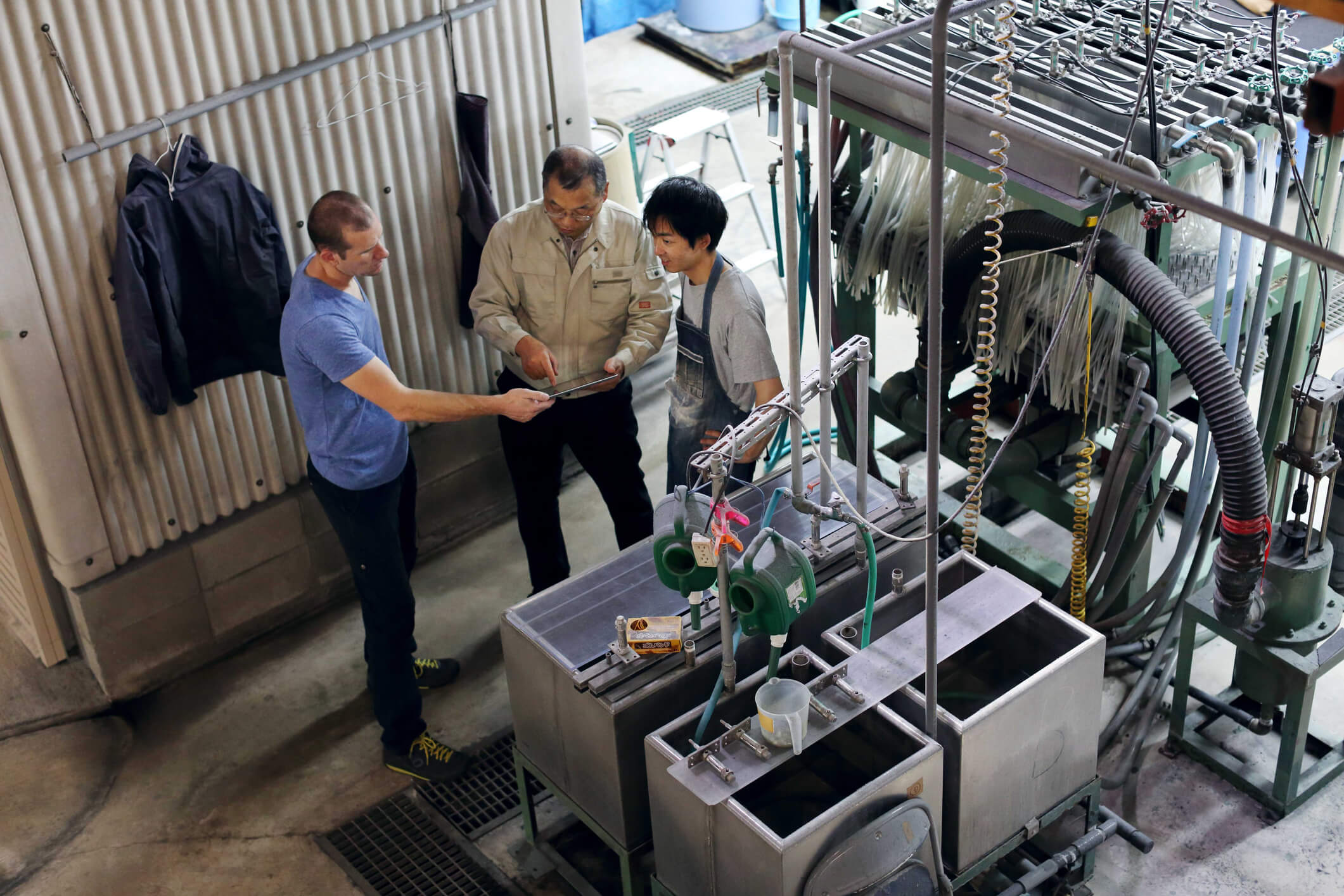
Last Updated: 12 Jul 2020 Communication Kaizen
American companies are hiring Japanese productivity consultants
Recently, large U.S. companies have been hiring Japanese productivity consultants to work with their factory teams on gemba kaizen (factory floor productivity) activities. The Japanese experts have had many years of experience leading kaizen activities in Japan, and after retirement are sharing their knowledge and insights in the U.S. (If you currently work for a Japanese manufacturer, take note: U.S. companies are paying a lot of money to get what you get for free!)
The productivity gains from their teachings are nothing less than astounding. Defects are down, yield is up, changeover times are reduced and excessive wait time is eliminated. The methods seem simple, but are grounded on the sincere desire to learn, to share wisdom with others, and to question every assumption. If we approached the communication between the Japanese and Americans in our organizations with the same open spirit and common sense, we could increase our communication productivity and avoid misunderstandings. Here are some kaizen concepts and how they apply to intercultural communication.
Make no assumptions
Why do we have to put up with frustrating and unproductive meetings? If meetings are a problem at your company, take a look at how they are held. Is there an agenda? If not, why not? What time of day are meetings generally held? Where are they held? What supporting materials are provided? Do meetings go over lunch? If we assume that the problem is that Japanese are always like this and Americans are always like that, we will not get to kaizen. Examine your assumptions and test every one of them.
Genchi, gensho, genjitsu
Genchi means the actual place. In a factory, this is usually the shop floor. Gensho is the problem or bad situation. Genjitsu is the truth or reality. When dealing with a problem, Genchi, gensho, genjitsu teaches us not to jump straight to the truth (genjitsu) before first going to the factory floor (genchi) and taking a very close and thoughtful look at the problem (gensho). Kaizen is a process that gets us closer to the truth because we do not lead with our opinions but we train our skills of observation. Similarly, when there is a communication issue, the kaizen way is to look into the facts of the matter, rather than relying preconceived ideas of why it might have happened.
Defects are your teacher
In a kaizen exercise, defects are not thrown away. They are very carefully scrutinized for trends and variations that might lead to an understanding of the root causes of process failures. In the same way, serious misunderstandings should not be swept under the rug. A neutral party, preferably a manager, should learn the facts in the matter and determine if the root cause is a problem in communication norms that needs to be addressed.
Spaghetti Chart
In factory kaizen exercises, spaghetti charts are used to track workflow in a visual way in order to spot inefficiencies. The team creates a map of the factory, and plots locations on the map in the order they occur in the process. For example, the part is taken off the production line and taken to the other side of the factory for welding, then returned to the line. Point 1 is the production line, Point 2 is the welding station and Point 3 is the production line again. After the team has plotted all the points, they run a bright piece of yarn from point to point. A messy inefficient process, with points doubling back and criss-crossing, is easy to spot, because the diagram looks like plate of spaghetti. Once the problem is made visible through the spaghetti diagram, the team can eliminate steps or relocate points to streamline the process.
The concept of the “virtual” spaghetti diagram can be used to pinpoint communication problems. If you visualize your office floor and map out who goes where and who interacts face to face with whom, you may find that your local Japanese expatriate only has regular face-to-face interaction with the administrative assistants. Or if you have multiple expatriates, they could be interacting mostly with one another. The spaghetti chart could point to a need to increase the interactions between certain key people. The solution is to add, not subtract, spaghetti strings from offices of the American managers to the offices of the expatriates. If you visualize the computers and smart phones of the people in your company, you may discover that you have “information brokers” both on the Japanese and the American side, who are indispensable for keeping everyone in the loop. This could indicate a need for more regular official announcements or meetings for the purpose of making sure everyone gets the same message.
Define the good situation
Once the problems have been observed clearly, then the good situation is defined. This is the fundamental meaning of “kaizen (改善).” In Japanese “zen (善) means “the good,” as in “good actions lead to good rewards.” “Kai (改) means to “search for, reform, revise and improve.” The searching and revision are not one-time things. They are done continuously, and “the good” is always being redefined. Let’s say you decide to improve meetings by always having an agenda. That is “kaizen.” Then you continue to look for ways to improve the productivity of meetings, and three months or six months after instituting the agenda policy, you decide to have both an agenda and also have a rule not to interrupt. That is “kaizen.” As communication improves, so does your definition of “good” communication.
Standardization
Standardization means finding the “good” process and enabling it to be performed perfectly every time. In factories there are work instructions, photos of parts where parts should be, and mechanisms for preventing human error. In intercultural communication, standardization could include developing norms for meetings, formats for agendas and guidelines for email communications.
Yokotenkai
In Japanese yokotenkai or yokoten for short means “horizontal deployment.” The good results of kaizen in one area are deployed horizontally to other areas. That means there is a culture of information-sharing throughout the company. If you have people in your company who have a particular gift for building bridges between the two cultures, they should be invited to any brainstorming you do for kaizen of communication productivity.
Bring in outside help
Even big successful U.S. manufacturers hire outside consultants to scrutinize factory processes and give advice. Manufacturing has embraced kaizen as a way to increase productivity, reduce waste and increase profits. The kaizen concepts can also be applied to intercultural interaction. Training and practice can pinpoint root causes of misunderstanding and inefficiency and increase the productivity of human beings.
This article originally appeared in Japan Close-Up Magazine
Other articles you may be interested in:
MONOZUKURI — ANOTHER LOOK AT A KEY JAPANESE PRINCIPLE
GENIN TSUIKYU – JAPANESE BUSINESS GETS TO THE ROOT OF THE MATTER
CLEARING THE AIR — THE POWER OF APOLOGY IN JAPAN
Related articles
The culture component and why it matters in management
Let me start with what might at first appear to be a personal story unrelated to cross-cultural mana
Purpose should come from within, but also from outside Japan HQ
Recently an HR director for a Japanese financial services company in Europe told me that he had been
The different meanings of psychological safety in Japan, Europe and North America
The concept of “psychological safety” in the workplace started in the United States in the 1960s and




